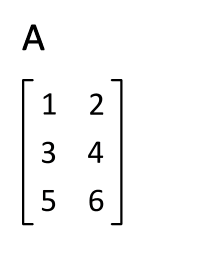 |
Web Coverage Processing Service
The Web Coverage Processing Service (WCPS) defines a language for filtering and processing of multi-dimensional raster coverages, such as sensor, simulation, image, and statistics data. The Web Coverage Processing Service is maintained by the Open Geospatial Consortium (OGC). This raster query language allows clients to obtain original coverage data, or derived information, in a platform-neutral manner over the Web. Overview WCPS allows to generate pictures suitable for displaying to humans and information concise enough for further consumption by programs. In particular, the formally defined syntax and semantics make WCPS amenable to program-generated queries and automatic service chaining. As the WCPS language is not tied to any particular transmission protocol, the query paradigm can be embedded into any service framework, such as OGC Web Coverage Service (WCS) and OGC Web Processing Service (WPS). The current WCPS version is 1.0. The standards document, available from th ... [...More Info...] [...Related Items...] OR: [Wikipedia] [Google] [Baidu] |
 |
Coverage Data
A coverage is the digital representation of some spatio-temporal phenomenon. ISO 19123 provides the definition: * '' feature that acts as a function to return values from its range for any direct position within its spatial, temporal or spatiotemporal domain'' Coverages play an important role in geographic information systems (GIS), geospatial content and services, GIS data processing, and data sharing. A coverage is represented by its "domain" (the universe of extent) and a collection representing the coverage's values at each defined location within its range. For example, a satellite image derived from remote sensing might record varying degrees of light pollution. Aerial photography, land cover data, and digital elevation models all provide coverage data. Generally, a coverage can be multi-dimensional, such as 1-D sensor timeseries, 2-D satellite images, 3-D x/y/t image time series or x/y/z geo tomograms, or 4-D x/y/z/t climate and ocean data. However, coverages are more gener ... [...More Info...] [...Related Items...] OR: [Wikipedia] [Google] [Baidu] |
|
Open Geospatial Consortium
The Open Geospatial Consortium (OGC), an international voluntary consensus standards organization for geospatial content and location-based services, sensor web and Internet of Things, GIS data processing and data sharing. It originated in 1994 and involves more than 500 commercial, governmental, nonprofit and research organizations in a consensus process encouraging development and implementation of open standards. History A predecessor organization, OGF, the Open GRASS Foundation, started in 1992. From 1994 to 2004 the organization also used the name Open GIS Consortium. The OGC website gives a detailed history of the OGC. Standards Most of the OGC standards depend on a generalized architecture captured in a set of documents collectively called the ''Abstract Specification'', which describes a basic data model for representing geographic features. Atop the Abstract Specification members have developed and continue to develop a growing number of specifications, or ''stan ... [...More Info...] [...Related Items...] OR: [Wikipedia] [Google] [Baidu] |
|
|
Web Coverage Service
The Open Geospatial Consortium Web Coverage Service Interface Standard (WCS) defines Web-based retrieval of coverages – that is, digital geospatial information representing space/time-varying phenomena. Overview A WCS provides access to coverage data in forms that are useful for client-side rendering, as input into scientific models, and for other clients. The WCS may be compared to the OGC Web Feature Service (WFS) and the Web Map Service (WMS). As with WMS and WFS service instances, a WCS allows clients to choose portions of a server's information holdings based on spatial constraints and other query criteria. Unlike OGC Web Map Service (WMS), which portrays spatial data to return static maps (rendered as pictures by the server), the Web Coverage Service provides available data together with their detailed descriptions; defines a rich syntax for requests against these data; and returns data with its original semantics (instead of pictures) which may be interpreted, extra ... [...More Info...] [...Related Items...] OR: [Wikipedia] [Google] [Baidu] |
|
|
Web Processing Service
The OGC Web Processing Service (WPS) Interface Standard provides rules for standardizing inputs and outputs (requests and responses) for invoking geospatial processing services, such as polygon overlay, as a web service. The WPS standard defines how a client can request the execution of a process, and how the output from the process is handled. It defines an interface that facilitates the publishing of geospatial processes and clients’ discovery of and binding to those processes. The data required by the WPS can be delivered across a network or they can be available at the server. WPS can describe any calculation (i.e. process) including all of its inputs and outputs, and trigger its execution as a web service. WPS supports simultaneous exposure of processes via HTTP GET, HTTP POST, and SOAP, thus allowing the client to choose the most appropriate interface mechanism. The specific processes served up by a WPS implementation are defined by the owner of that implementation. Althou ... [...More Info...] [...Related Items...] OR: [Wikipedia] [Google] [Baidu] |
|
 |
Raster Image
upright=1, The Smiley, smiley face in the top left corner is a raster image. When enlarged, individual pixels appear as squares. Enlarging further, each pixel can be analyzed, with their colors constructed through combination of the values for red, green and blue. In computer graphics and digital photography, a raster graphic represents a two-dimensional picture as a rectangular matrix or grid of square pixels, viewable via a computer display, paper, or other display medium. A raster is technically characterized by the width and height of the image in pixels and by the number of bits per pixel. Raster images are stored in image files with varying dissemination, production, generation, and acquisition formats. The printing and prepress industries know raster graphics as contones (from ''continuous tones''). In contrast, line art is usually implemented as vector graphics in digital systems. Many raster manipulations map directly onto the mathematical formalisms of linear ... [...More Info...] [...Related Items...] OR: [Wikipedia] [Google] [Baidu] |

|